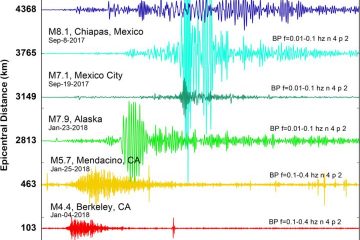Earth Sciences (also referred to as Geosciences), which deals with basic issues surrounding our planet, plays a vital role in the area of energy and raw materials supply.
Earth Sciences comprises subjects such as geology, geography, geological informatics, paleontology, mineralogy, petrography, crystallography, geophysics, geodesy, glaciology, cartography, photogrammetry, meteorology and seismology, early-warning systems, earthquake research and polar research.

In the past decades mainly static attributes have been investigated using machine learning approaches, such as the distribution of soil properties from the…

A team of British and American researchers, co-led by the University of Cambridge, has measured how much the McMurdo ice shelf in Antarctica flexes in response…

An international team led by the Innsbruck geologists Arata Kioka, Tobias Schwestermann, Jasper Moernaut, and Michael Strasser could quantify for the first…

Cracks in the floating ice tongue of Petermann Glacier in the far northwest reaches of Greenland indicate the pending loss of another large iceberg.

Vertebrates’ skeletons are unique in that they become mineralised as they develop, allowing them to become hard whilst remaining flexible. ‘The mineralised…

In traditional seismology, researchers studying how the earth moves in the moments before, during, and after an earthquake rely on sensors that cost tens of…